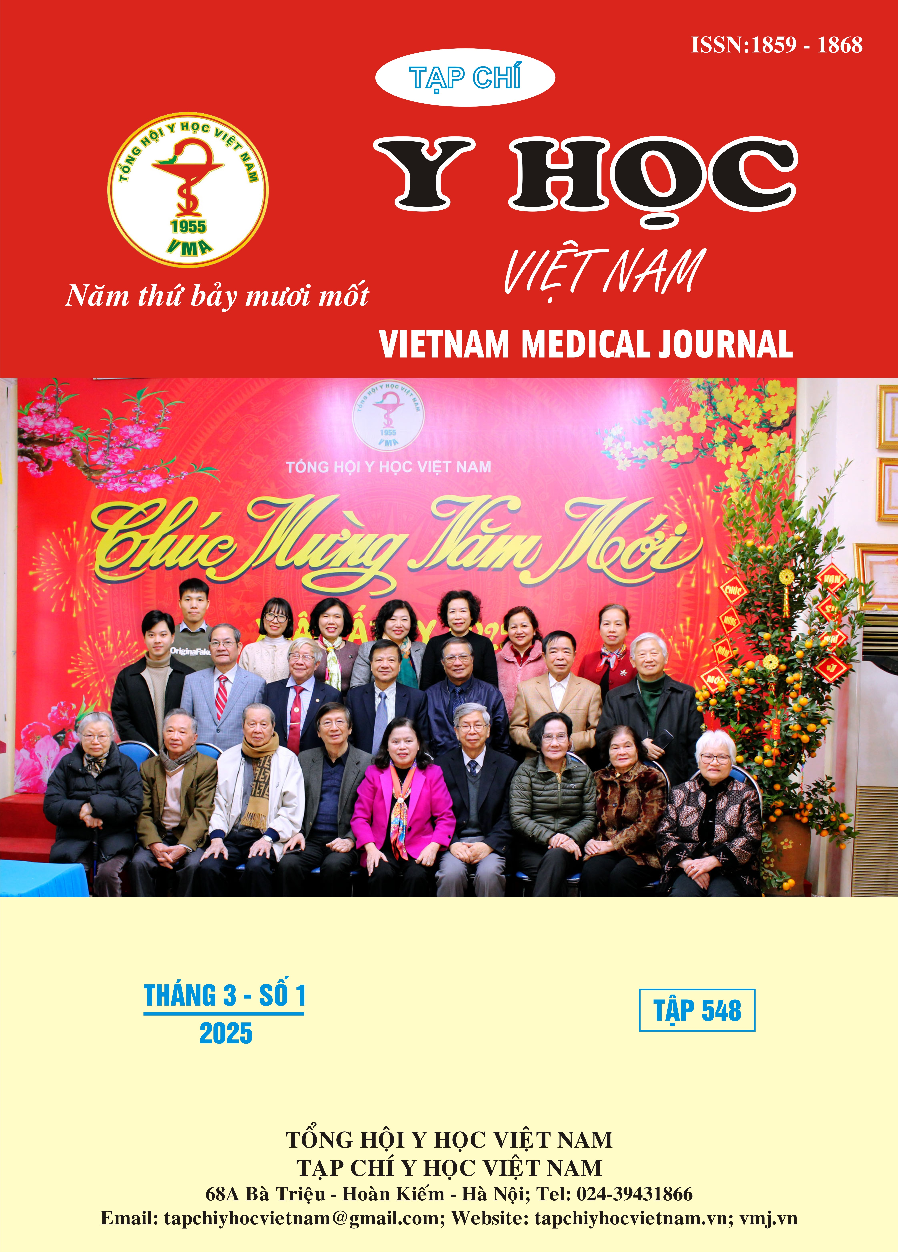COMPARATIVE ANALYSIS OF WEBER’S TEST AND PURE TONE AUDIOMETRY IN THE DIAGNOSIS OF SUDDEN SENSORINEURAL HEARING LOSS
Main Article Content
Abstract
The Weber test is used as part of the clinical examination for patients suspected of sudden sensorineural hearing loss. However, in Vietnam, the use of the Weber test is not routinely performed in ENT clinics. The study involved 53 patients with unilateral sudden sensorineural hearing loss who underwent the Weber test using tuning forks at frequencies of 512 Hz, 1024 Hz, 2048 Hz, and 4096 Hz. The sensitivity and specificity of the Weber test were analyzed for each tuning fork frequency. Results from the 53 patients with unilateral sudden hearing loss confirmed by audiometry indicated that the highest sensitivity of the Weber test was at a frequency of 1024 Hz, with a sensitivity of 62.2%. There was no statistically significant difference between the frequencies of 512 Hz and 1024 Hz, nor between 1024 Hz and 2048 Hz. The sensitivity of the Weber test at frequencies of 512 Hz and 4096 Hz was the same. Therefore, in clinical examinations, a tuning fork at 1024 Hz can be used as an initial diagnostic method for patients with sudden hearing loss. However, there are still certain errors, so pure tone audiometry is needed for accurate diagnosis.
Article Details
Keywords
Sudden Sensorineural Hearing Loss (SSNHL), Weber test, Pure Tone Audiometry
References
2. Ungar O.J, Handzel O, Oron Y, et al. Weber test accuracy in sudden sensorineural hearing loss: which frequency is best. Acta Otolaryngol. 2021; 141(5): 502-505.
3. British Society of Audiology. Recommended procedure for Rinne and Weber turning-fork tests. Br J Audiol. 1987; 21(3): 229-230.
4. Shuman AG, Li X, Halpin CF, et al. Turning fork testing in sudden sensorineural hearing loss. JAMA Intern Med. 2013; 173(8): 706-707.
5. Vermiglio et al. The effect of stimulus audibility on the relationship between puretone average and speech recognition in noise ability. JAAA; 2019; 30(7): 607-618.
6. V. Békésy G. Zur theorie des horens bei der schallaufnahme durch knochenleitung. Ann Phys. 1932;405(1):111-136.
7. Butskiy O, Nunez DA. Diagnostic accuracy of parallel vs perpendicular orientation of the tuning fork in the identification of conductive hearing loss. JAMA Otolaryngol Head Neck Surg. 2018;144(3):275-276.
8. Ungar OJ, Handzel O, Cavel O, et al. A smartphone-based weber test may discriminate between a conductive and a sensorineural hearing loss. Audiol Neurootol. 2019;24(4):191-196.
9. Heller MF, Anderman BM, Singer EE. Tuning forks and bars. In Functional otology. Berlin, Heidelberg: Springer; 1955. p. 94-99.
10. Stachler RJ, Chandrasekhar SS, Archer SM et al: Clinical practice guideline: sudden hearing loss. Otolaryngol Head Neck Surg 2012; 146(3): S1-S35.


